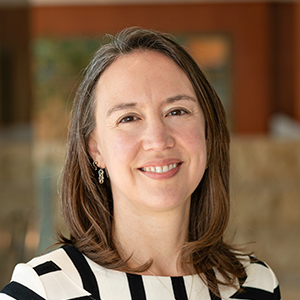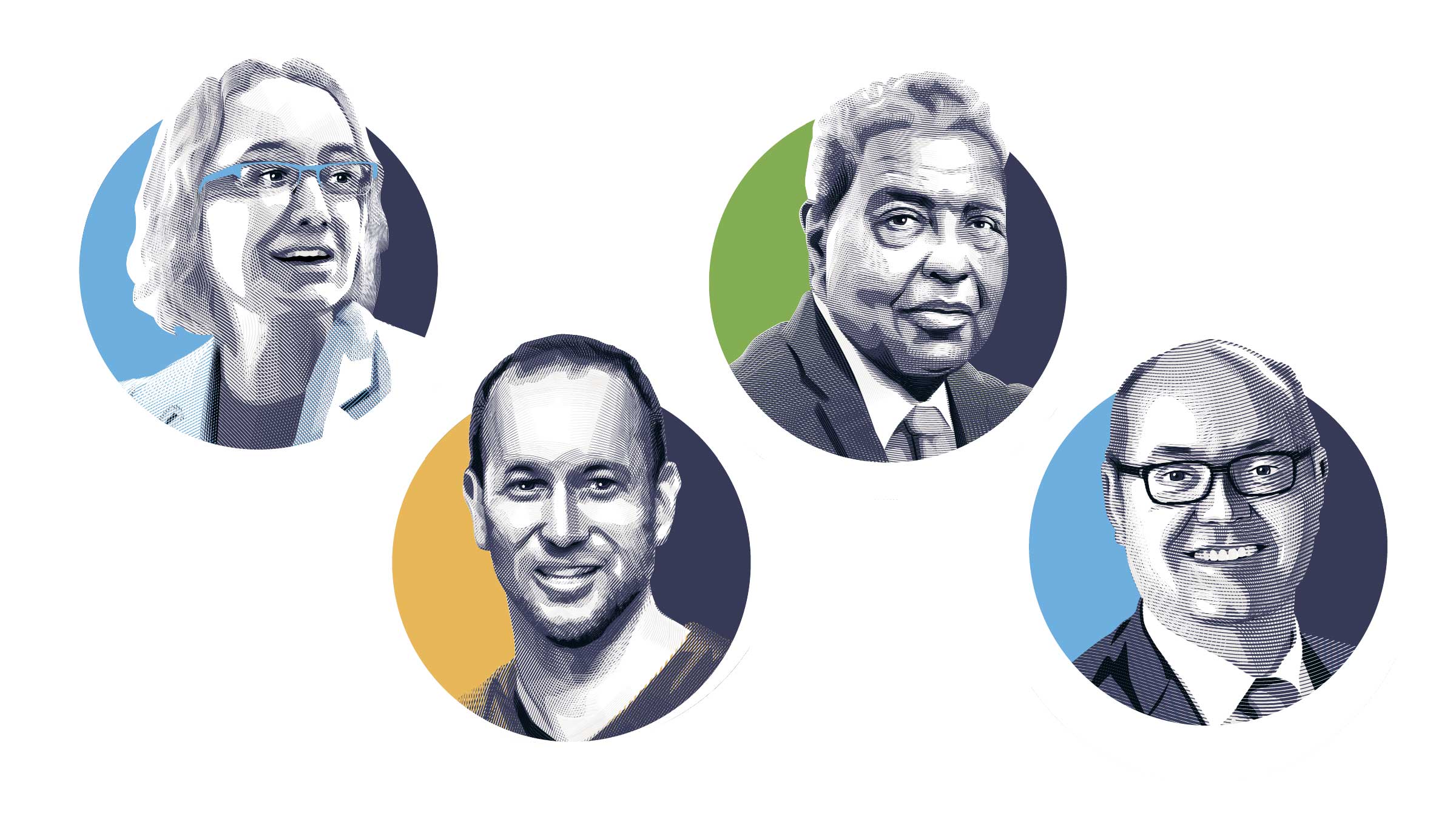After two long years of remote visits, Institute visiting scholars are once again in residence at the Minneapolis Fed, gathering for seminars, chatting over lunch, popping into a neighbor’s office to learn about new data, debate an idea, and solve problems.
“It’s an environment supportive of growth, exploration, trial and error. It’s easy to talk to people, and as a result, one learns an incredible amount,” explained David Wiczer, assistant professor at Stony Brook, who spent three months in residence at the Institute in 2019.
That learning is broadened by one of the hallmarks of the visiting scholars program: its diversity.
“Graduate school is a time of high specialization, and so there’s a lot of homogeneity in terms of methods and topics that you encounter,” observed 2021–22 visiting scholar Jane Olmstead-Rumsey, assistant professor at the London School of Economics. “The Institute is the opposite—there’s a lot of diversity among the visiting scholars, which exposes you to new ways of thinking.”
Conversations with applied microeconomists have encouraged Olmstead-Rumsey to replicate their experiments using data generated by the structural models of the macroeconomy that she develops. If the results match, that lends credence to the predictions of her models. Fellow visiting scholar Eric Ohrn, associate professor at Grinnell, said that left to his own devices, he engages mostly with public finance and tax research. Institute seminars gave him “a better appreciation for what kinds of questions different methods are good at answering.”
These dimensions of diversity are vital to making the Institute an “innovative lab of ideas,” said Alessandra Fogli, the Institute’s assistant director of inequality research. “Together we tackle issues of inequality and inclusivity, trying to design innovative policies that can affect the well-being of all Americans.”
That process is enhanced when policy is connected to research and research is connected to policy.
“Every seminar, someone in the audience would want to know, ‘How do we implement this policy?’ or ‘How might we alter monetary policy to fix this problem?’ Knowing these questions are coming makes you adjust your own research to be closer to reality,” Ohrn said.
Researchers who have been pushed to tackle practical questions of implementation are better positioned to communicate effectively with policymakers. This spring, Olmstead-Rumsey briefed a congressional subcommittee about the impact of the COVID-19 recession and recovery on women’s labor. Institute scholars have briefed Minneapolis Fed leaders on the origins of wealth gaps and innovative interventions to close K-12 achievement gaps. Wiczer has formed a partnership with a historian and computer programmer to analyze New York state’s carbon tax proposal.
“What stands out to me about my experience at the Institute is really what stands out about the Institute in general,” said Wiczer. “It’s one of a few places where you get a bunch of people together who care about getting the right answer—being rigorous, applying cutting-edge economic techniques— to questions that often are overlooked.”
This article is featured in the Fall 2022 issue of For All, the magazine of the Opportunity & Inclusive Growth Institute
Lisa Camner McKay is a senior writer with the Opportunity & Inclusive Growth Institute at the Minneapolis Fed. In this role, she creates content for diverse audiences in support of the Institute’s policy and research work.






